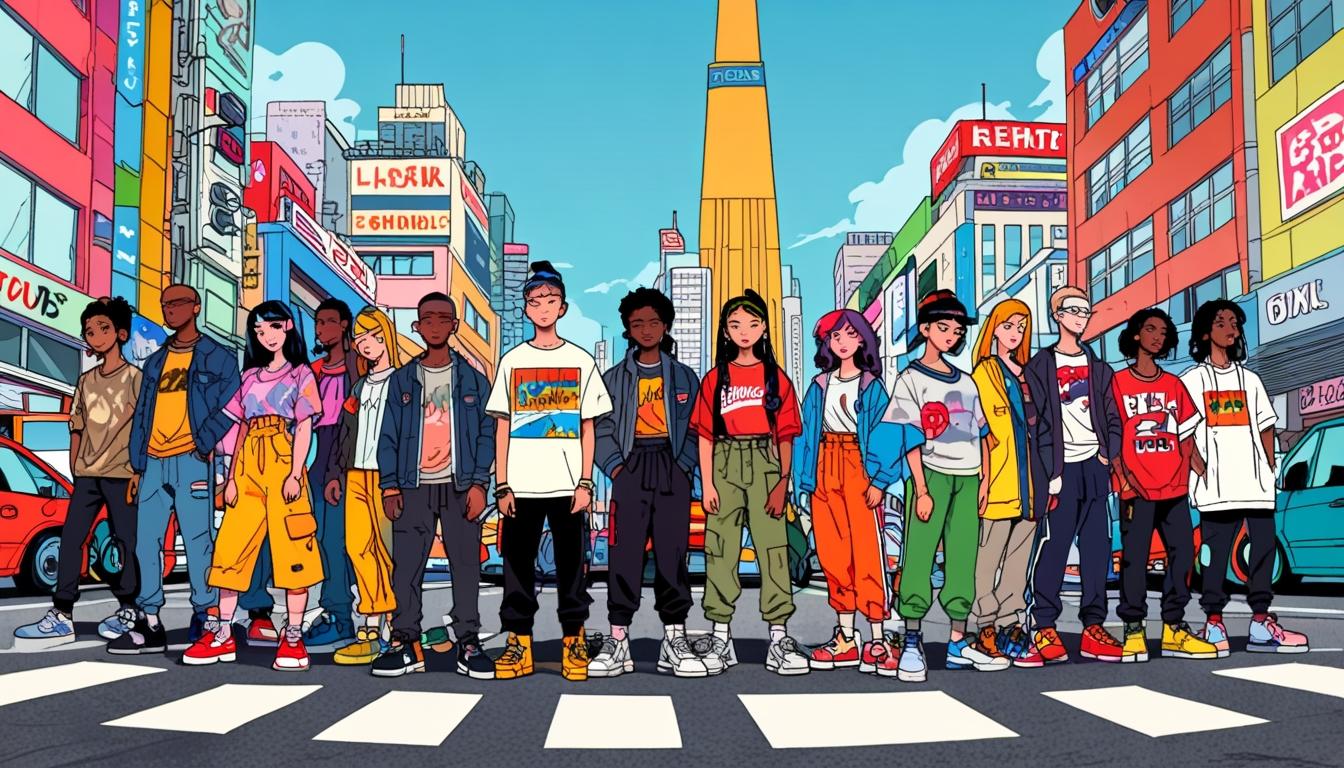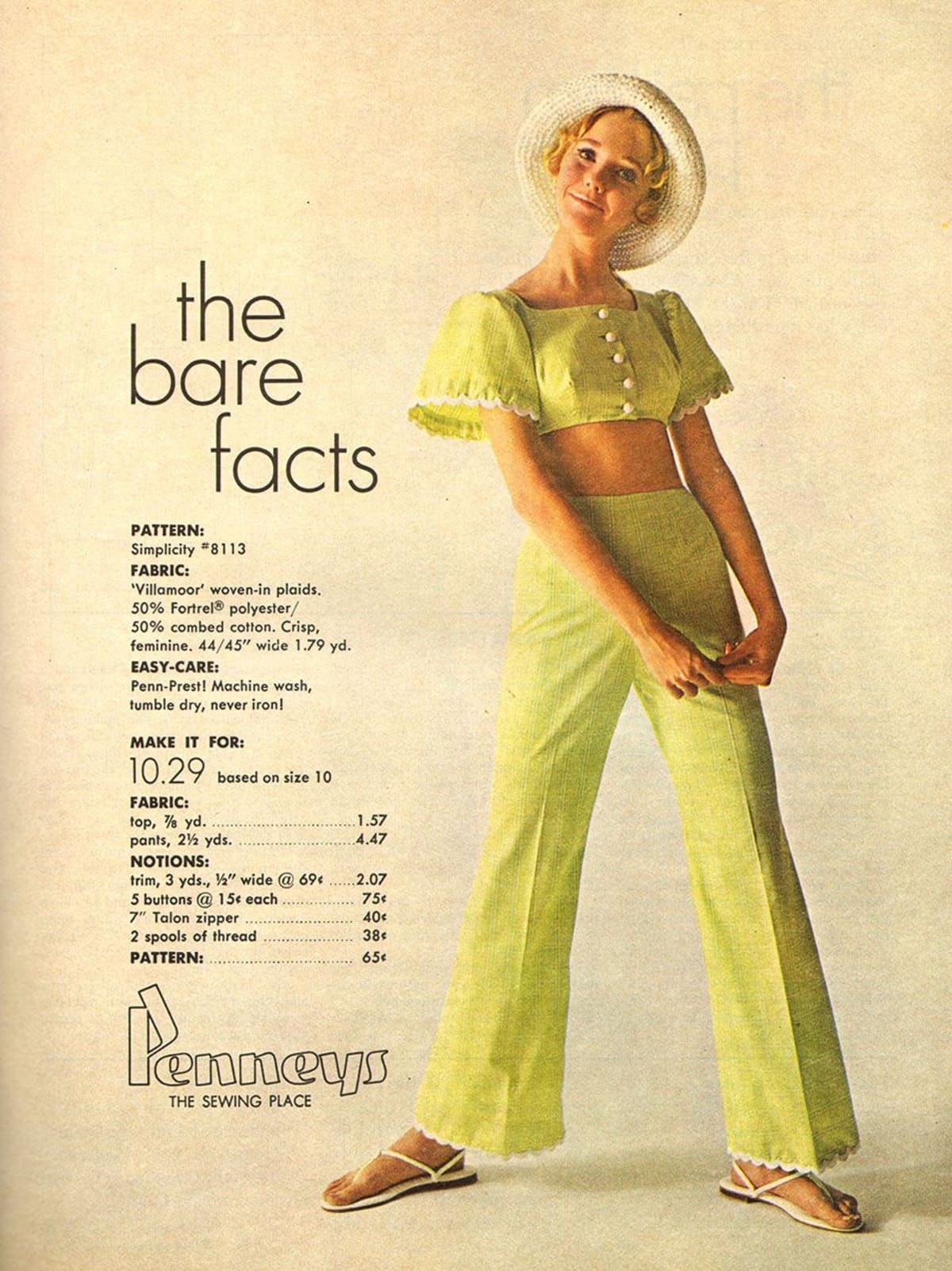In the 1930s, women's bobbed hair accessories became crucial for enhancing both practicality and style. Headbands embellished with flowers or jewels added a playful flair, while decorative pins and barrettes provided elegance and security to bobbed styles. Hair nets were essential for maintaining a polished look, particularly during social events. Cloche hats framed faces beautifully, combining fashion with sophistication. Inspired by Hollywood stars like Jean Harlow, these accessories allowed women to express their individuality amidst changing societal norms. The era's creativity in hair adornments reflected deeper cultural shifts, significant for understanding the trends of the time. There's much more to explore on this topic.
Evolution of Bobbed Hairstyles
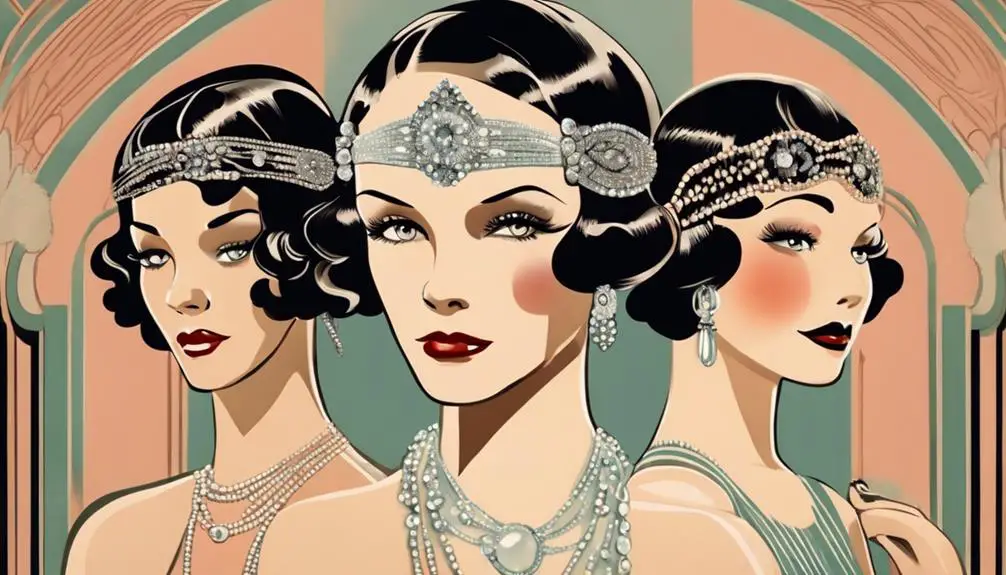
The evolution of bobbed hairstyles, particularly in the 1930s, showcases how fashion adapts to cultural shifts and personal expression. As you look back on this era, you'll notice a significant transformation from the straight lines of the 1920s to hairstyles that emphasized volume and soft waves. This shift reflected a broader movement towards femininity and elegance. The Marcel Wave emerged as a signature look, replacing the tighter finger waves of the previous decade. You might appreciate how this technique emphasized a softer, more romantic hairstyle, capturing the essence of the time.
The introduction of the Pageboy hairstyle, with its smooth top and curled ends, brought further variety to bobbed hair, allowing you to express your individuality. These changes in hair fashion trends mirrored the evolving roles of women in society, as bobbed cuts became increasingly practical yet glamorous. Balancing work and social obligations, women embraced these stylish looks, showcasing their ability to navigate multiple spheres with confidence. The 1930s truly marked a pivotal moment in hairstyle evolution, highlighting how hair became a canvas for personal style amid changing cultural landscapes.
Key Accessories for Bobbed Hair
As bobbed hairstyles flourished in the 1930s, the accessories that accompanied them became just as important as the cuts themselves. You'd often find women enhancing their chic bobs with a variety of key accessories. Headbands, adorned with flowers, ribbons, or jewels, offered a playful touch while keeping hair neatly in place. Decorative pins and barrettes also gained traction; they not only secured your bob but added an elegant flair to your overall look.
Hair nets became essential for maintaining that sleek appearance, especially during social events where every detail mattered. Meanwhile, turbans and scarves emerged as fashionable options for women on the go, providing a stylish way to cover and shape your bobbed hair.
Cloche hats rounded out this era's accessory lineup, framing the face beautifully and lending a sophisticated edge to women's hairstyles. Each accessory played a pivotal role in defining the bobbed look of the 1930s, allowing you to express individuality while embracing the decade's evolving fashion trends. So, whether you're securing your hair with a bobby pin or donning a cloche hat, these key accessories are what truly complete your bobbed hairstyle.
Styling Techniques and Tips
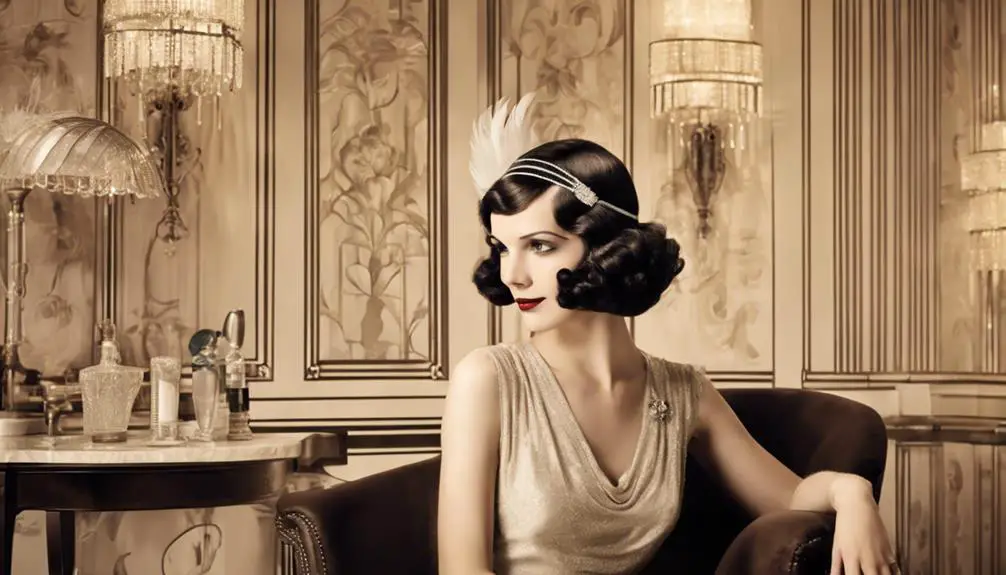
Emphasizing sleekness and elegance, mastering the styling techniques for bobbed hair can greatly enhance your overall look. Start by applying pomade or gel to your damp hair, which adds shine and hold, ensuring a polished finish. For added flair, consider incorporating decorative hair accessories like headbands and pins, which allow for personal expression while complementing your sleek style.
Utilize hot rollers or curling irons to create soft waves or curls, giving your bob versatility. Once styled, secure your look with hairnets and bobby pins to maintain its shape throughout the day. Regularly using shampoos and conditioners is essential to keep your hair healthy and shiny, especially with the rigorous styling techniques of the 1930s.
Here's a quick reference table to help you with styling techniques:
| Styling Technique | Purpose | Recommended Tools |
|---|---|---|
| Pomades & Gels | Adds shine and hold | Hair products |
| Hot Rollers | Creates soft waves and curls | Hot rollers |
| Bobby Pins & Nets | Secures style and maintains shape | Hair accessories |
| Decorative Accessories | Personal expression and flair | Headbands, pins |
Influence of Hollywood on Trends
Captivated by the glamour of the silver screen, women in the 1930s enthusiastically adopted the bob hairstyle popularized by Hollywood icons like Jean Harlow and Bette Davis. This shift toward short hair not only transformed individual looks but also sparked a fashion revolution, as women sought to emulate the sophisticated styles of their favorite stars. The bob's sleek, polished finish required hair accessories that could enhance its elegance, leading to a surge in demand for items like headbands, decorative pins, and jeweled clips.
Hollywood's influence permeated fashion magazines, which often showcased these iconic hairstyles alongside recommended accessories. This exposure made it easier for women to replicate the grandeur of the silver screen in their everyday lives. Additionally, the popularity of hairnets and bobby pins rose, as these practical tools became essential for securing short hair in the styles made famous by movie stars.
The bobbed hairstyle's rise in Hollywood also led to the increased availability of accessories specifically designed for shorter hair, catering to the desires of women wanting to capture that glamorous essence. In this environment, fashion became a powerful means of expressing identity and aspiration.
Cultural Significance of Hair Accessories
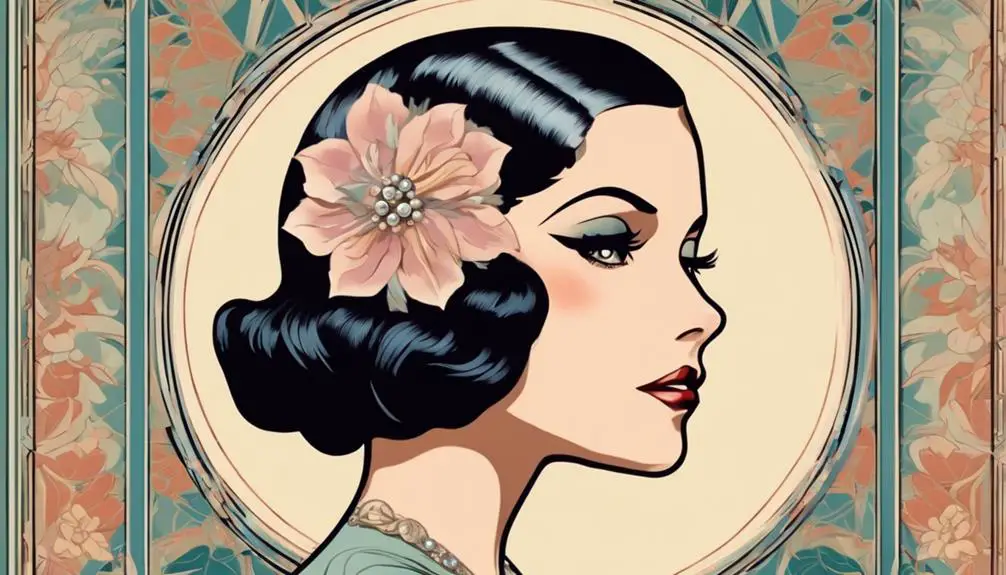
The cultural significance of hair accessories in the 1930s extends far beyond mere decoration; they became essential tools for self-expression and social identity. As you navigate this era, you'll notice how these items played multifaceted roles in women's lives, particularly in the context of evolving beauty trends. Here are four key aspects to reflect upon:
- Self-Expression: Hair accessories allowed women to showcase their individuality and personal style amidst societal expectations.
- Social Status: Elaborate designs, often inspired by Hollywood stars, reflected one's standing and aspirations within the community.
- Resourcefulness: During the Great Depression, women ingeniously utilized hair accessories to refresh their looks, avoiding frequent haircuts while maintaining elegance.
- Practicality: These accessories served functional purposes, securing bobbed hairstyles in place and ensuring a polished appearance throughout the day.
Frequently Asked Questions
Why Was Having a Bobbed Haircut in the 1920S Such a Big Deal?
Having a bobbed haircut in the 1920s symbolized your defiance against traditional norms. It represented newfound independence, embracing a modern, youthful identity, and connected you to influential figures, elevating your status within the cultural revolution.
How Do I Do My Hair Like 1930s?
To style your hair like the 1930s, create soft finger waves on damp hair, use hot rollers for volume, smooth with pomade, and consider the Marcel Wave for a polished, elegant finish.
What to Wear With Bobbed Hair?
When you've got bobbed hair, consider pairing it with statement earrings and a chic headband. A stylish scarf or floral pins can add flair, while a tailored dress enhances your overall sophisticated look.
When Did Bobbed Hair Become Popular?
Bobbed hair gained popularity in the 1920s, becoming a symbol of liberation. By the mid-1920s, film stars drove its mainstream acceptance, while the 1930s saw styles evolve, incorporating curls and volume, reflecting changing societal attitudes.


